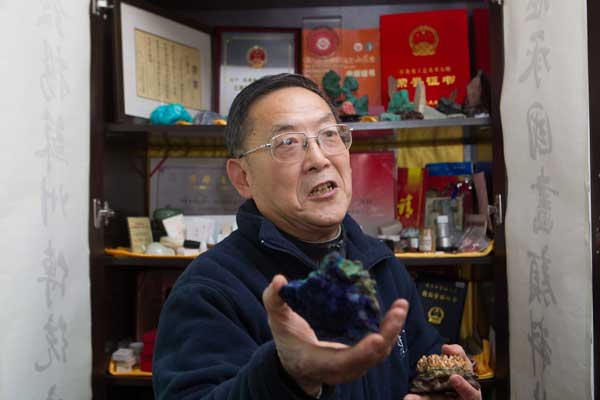Colors of nature
 |
|
Qiu Qingnian shows a mineral chunk he found in a copper mine. |
The biggest challenge, however, is the dwindling of raw materials. Many mines have been shut down to protect natural resources.
"I had traveled for a month in copper mines at border areas between Yunnan and Vietnam but failed to find suitable azurite, which can produce a bright blue," he says.
| The long way home |
For years, he maintained a good personal relationship with some mine managers, who regularly provided materials for him. But as the old men left, their followers refused to do him the favor.
"They prefer to keep the mineral stones as personal collections - some stones are beautiful, some are precious while some are regarded auspicious." he says. "I feel so tired and incompetent being the only one searching for raw materials."
Turning the hard stone into fine and pure painting colors is a hard job. A stone is washed and pounded, with its impurities eliminated, and then ground for 20 days, eight hours a day. The pure colors would emerge after a series of such procedures including rinsing, for at least two months.
But the laborious work had been the routine of ancient Chinese painters, who made colors by themselves, according to Wang Yiying, a painter in Shanghai.
"Chinese painters sought to convey their mind through images. They did not use a lot of colors in their paintings, instead, they would make only a few simple colors based on the subject they were going to paint," he says.
Unlike Western oil paintings that have many rich colors, traditional Chinese paintings involve a total of about a dozen of colors, which present a restrained, connotative and graceful effect, according to Wang.
For more China Face, here

















